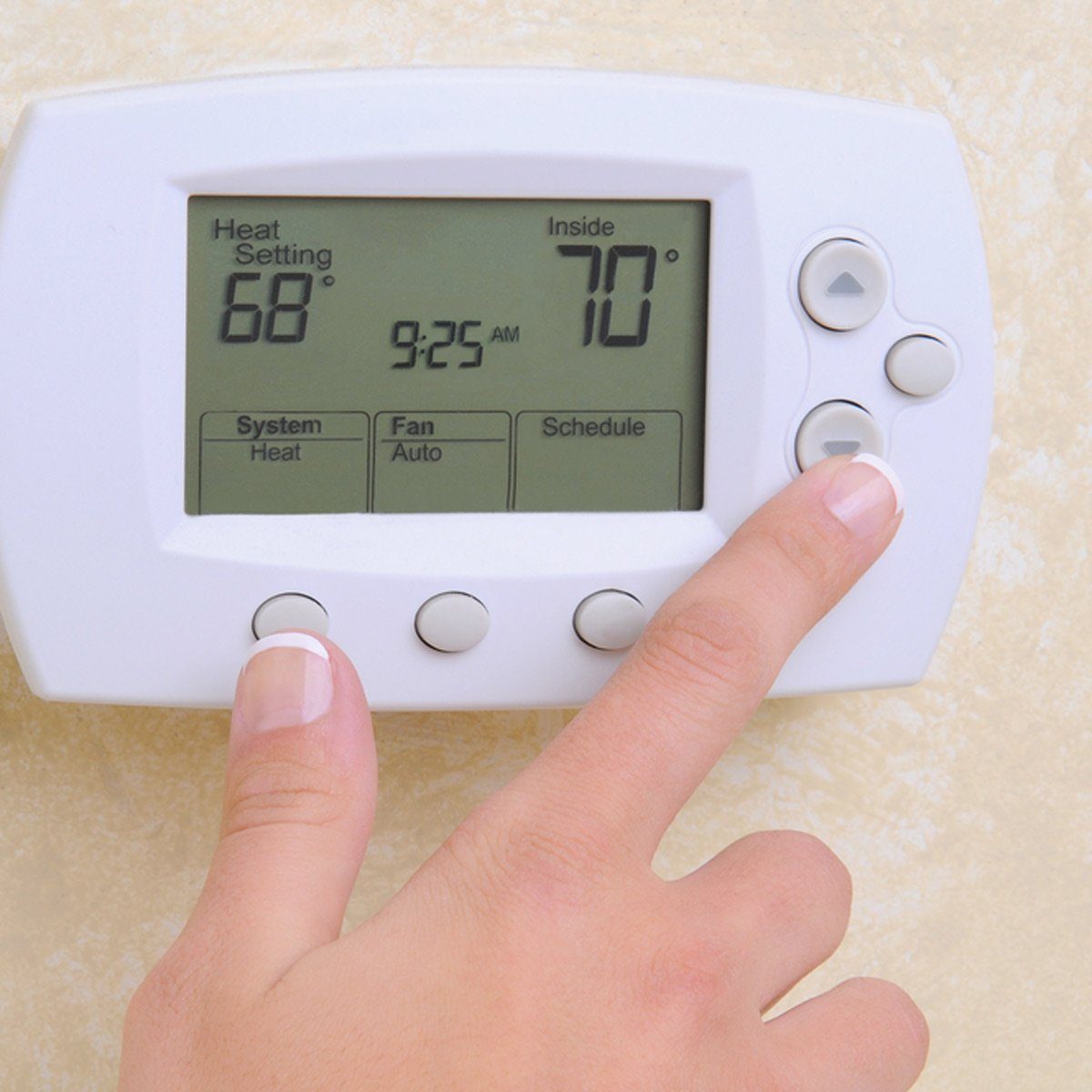
Cranking the thermostat heats your home faster
Common sense might suggest that by turning the dial on your thermostat all the way up your home will heat up at a faster rate. But that’s not really the case. Turning your thermostat all the way up just means that your furnace will pump higher levels of heat into your home—but it’s still going to work at the same pace as before.
Learn about the most common causes of house fires in Canada.
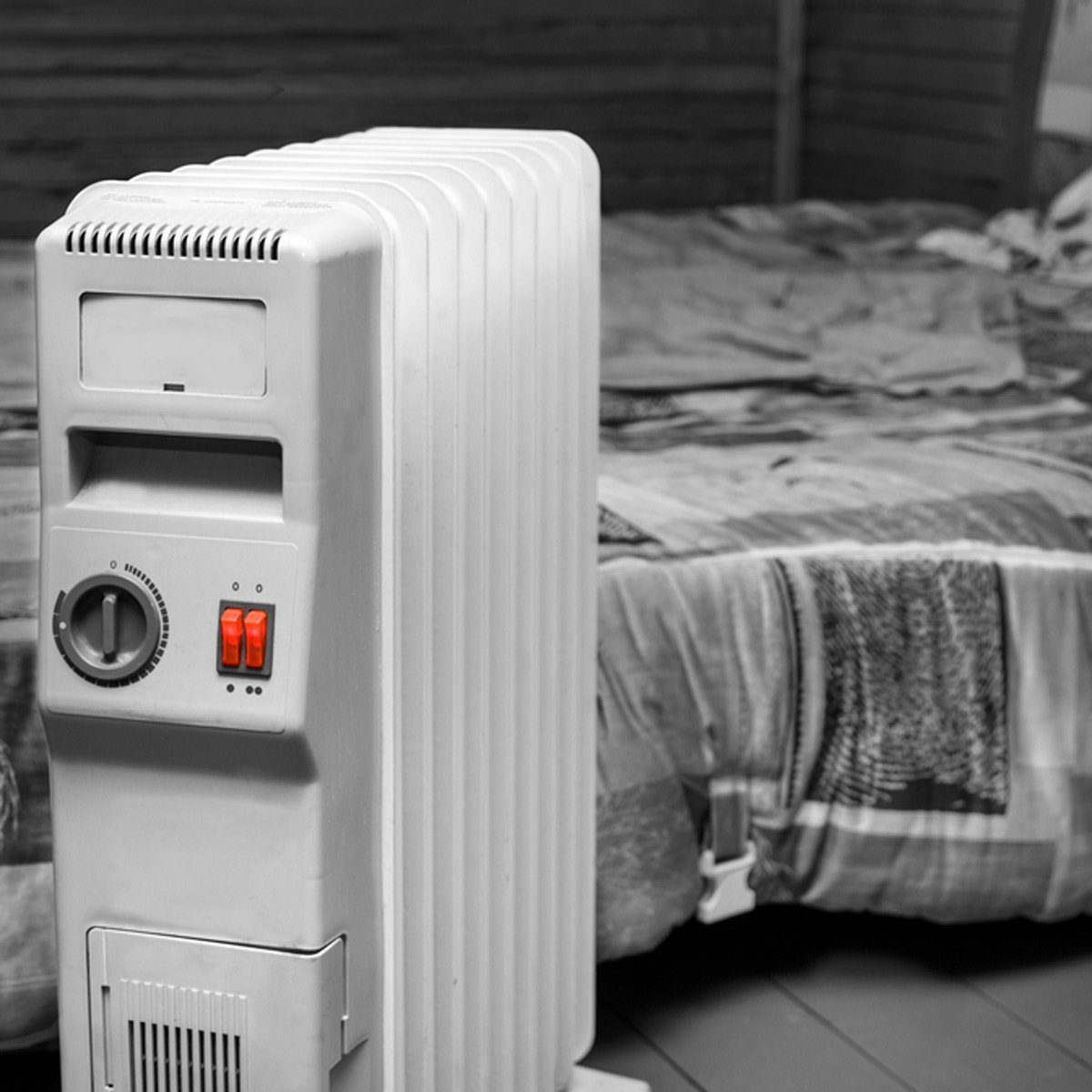
Space heaters are more effective than your furnace
Sometimes it can seem like your furnace just isn’t quite cutting it and a few space heaters are the perfect solution to cold spots throughout your home. While space heaters are a perfectly adequate temporary solution, they are nowhere near as efficient as gas, and the electricity used to run them is going to end up costing you a lot of money. That money would be better spent repairing your heating system so that it sufficiently heats your entire home without producing any cold spots.
Here are the sneaky ways your house is draining your bank account.
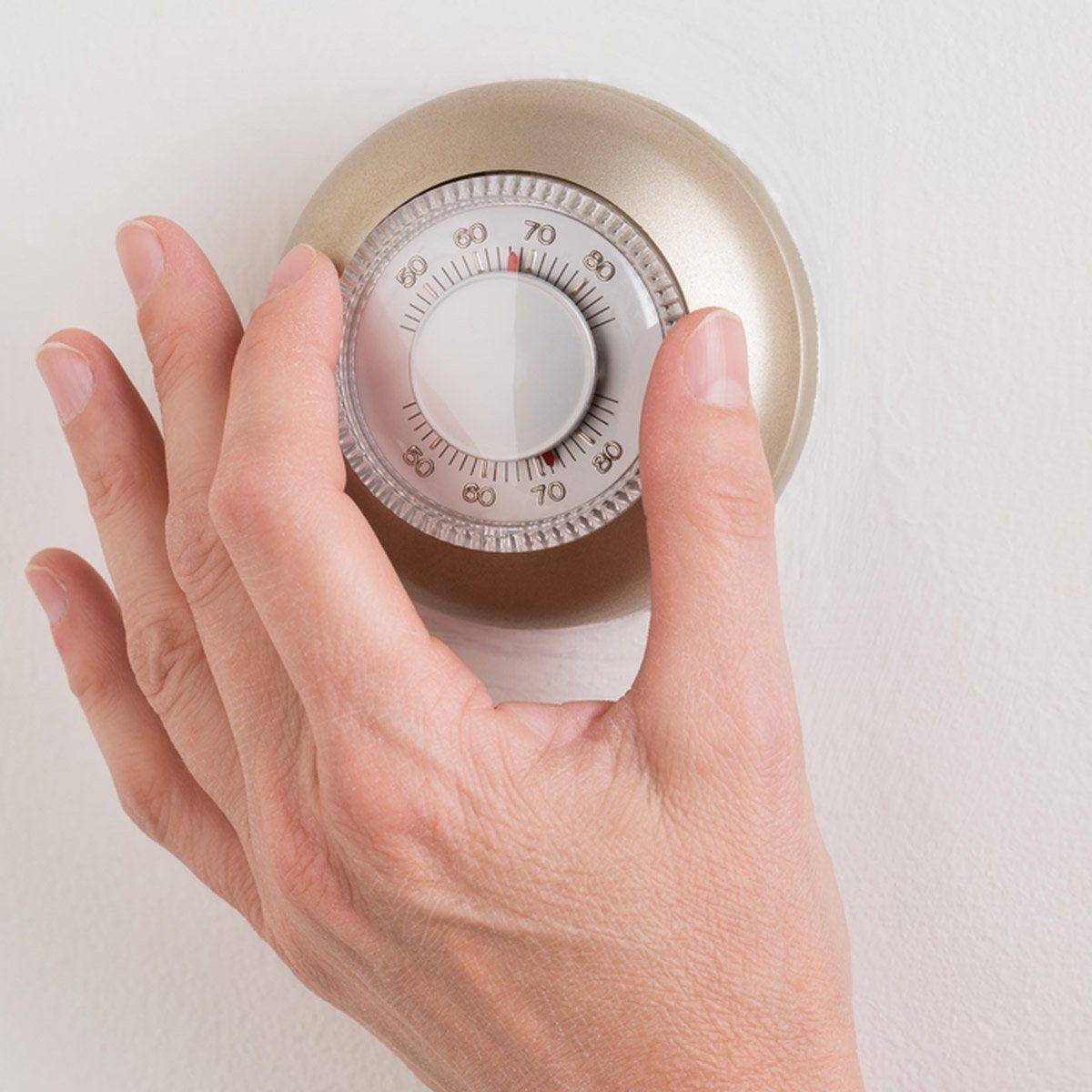
You save money by keeping temps consistent
Some people believe that periodically putting your thermostat on a lower setting won’t save you money because the furnace will have to burn through more fuel when you want to return the temperature to the higher setting. That is actually not the case. Turning down your thermostat for extended periods is actually a good idea and one that could save you some money. Energy.gov recommends setting your thermostat as low as you are comfortable with during winter months and lowering it further when you’re in bed or away from home. This both lowers your home’s environmental emissions while also saving you money on your energy bill.
Check out these things most homeowners aren’t doing—but need to.
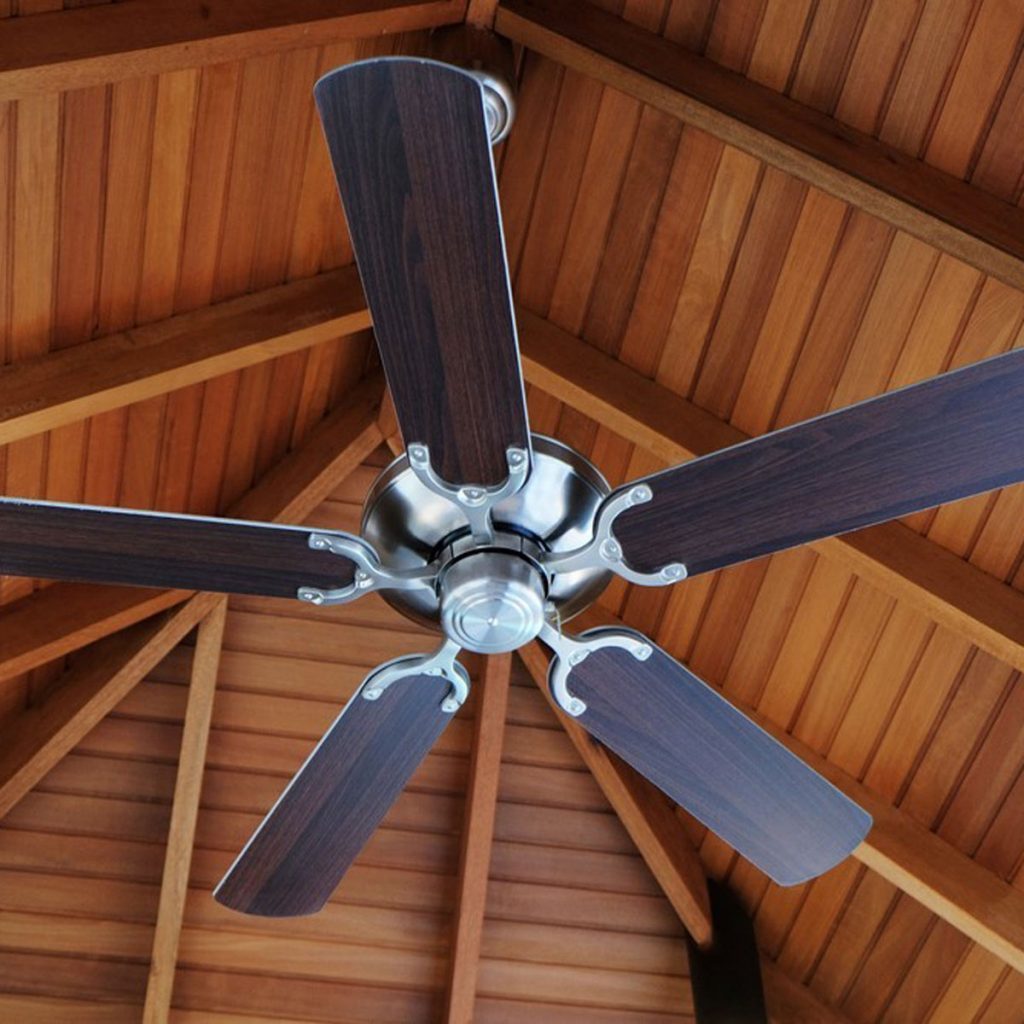
Ceiling fans are just for summer
If it’s mid-December and your home is feeling a little chilly, the last thing you might think to do is turn on your ceiling fans. However, most ceiling fans have a switch on the side that will change the direction they spin from clockwise to counter-clockwise. By spinning counter-clockwise, the fan will force hot air down from where it has risen to, sending heat to more areas in your home.
Read up on the home repairs anyone can do.
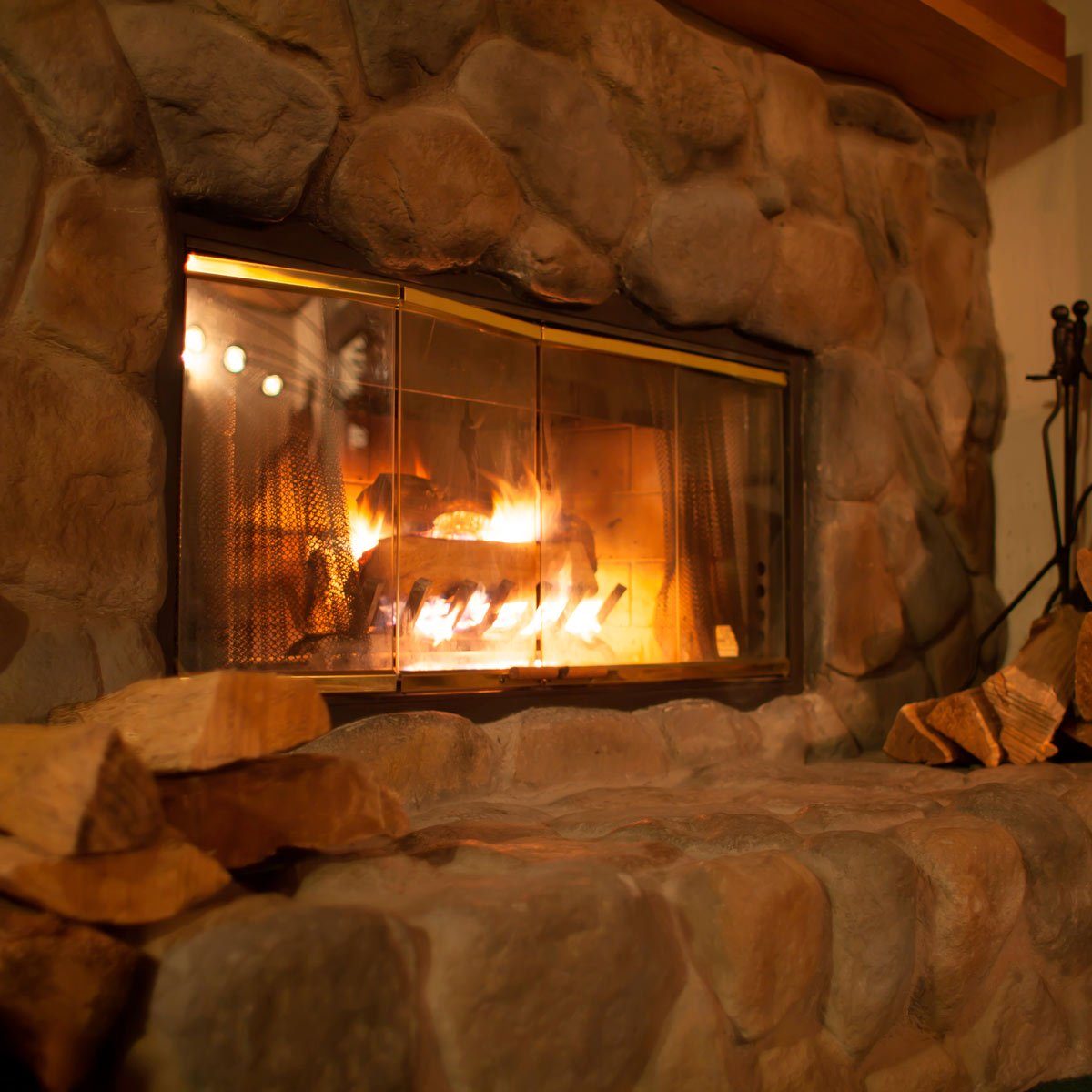
Fireplaces are a great way to heat a home
While the idea of spending the holiday season curled up next to a fireplace sounds like a cozy one, the cold reality is that fireplaces are generally pretty inefficient and costly ways to heat a home. Fireplaces can be a major source of heat loss during the winter, and the lumber you’ll need to burn through to heat an entire house could cost you a pretty penny.
Don’t miss these other energy saving tips!